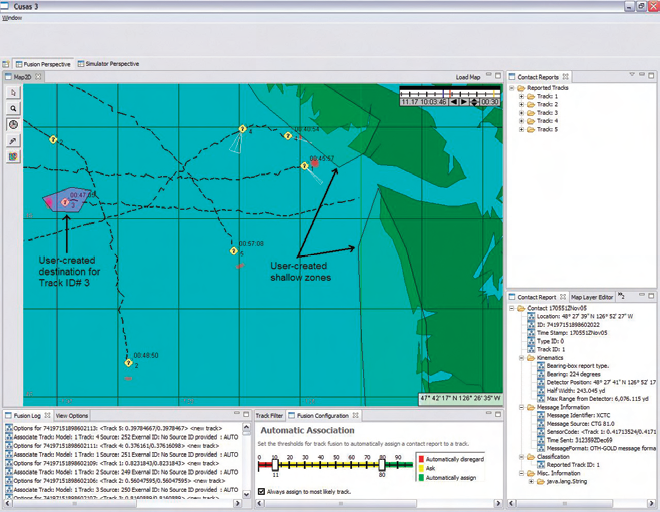Chemical Warfare Agent Sensors
Date: Jan 15, 2008
Source: ARMY SBIR Success Stories ( click here to go to the source)
Despite the range of chemical warfare agent (CWA) detection systems, few combine high sensitivity, stability, and ease of use. Typical enzyme assay systems are particularly sensitive to their environments, which limits activity and ease of use. ICx-Agentase developed a buffered enzymatic system that can be incorporated into materials and is capable of detecting a variety of CWAs.
Agentase, through STTR support from the Army Research Office (ARO), developed a colored chemical wipe for the detection of nerve agents. The wipe uses a pH balancing coupled enzyme system to maintain the appropriate pH in diverse environments. The presence of cholinesterase inhibiting nerve agents disrupts the coupled enzyme system, yielding a change in pH responsible for the color change. Further STTR-sponsored research enabled Agentase to develop a kit with a broad spectrum of sensing capabilities.
ICx-Agentase's Chemical Agent Detection (CAD) Kit offers a sensitive, stable, ease of use, no-power, low cost sensing capability in a system of five sensor pens for the detection of nerve, blood, and blister agents. This technology has been expanded to the detection of toxic industrial chemicals (TICs). The sensors have been fielded by the Defense Intelligence Agency (DIA) and the Department of Homeland Security (DHS). The sensor was selected as one of the 2003 Army's Top Ten Greatest Inventions.
In addition to the CAD Kit, this enzyme technology for the detection of CWAs and TICs has been expanded to other sensing applications including real-time air monitoring, water monitoring, and agent disclosure sprays. Further support from the Defense Threat Reduction Agency has led to the development of a badge that Soldiers can wear to indicate when a chemical threat is present. Support from the National Science Foundation and the ARO has been leveraged to develop a water monitor for real-time analysis for the presence of chemical warfare agents in drinking water.
Phase III Impacts:
The sensor is actively being used in DoD operations and by DHS. To date, there has been over $29M in Phase III funding, with $4M from DTRA and $25M from another Federal Agency. The ease of sampling surfaces is a new and significant capability that this sensor brings to the field and the Soldier. Tens of thousands of sensing kits are being used by DHS in training first responders from around the country. STTR support to Agentase facilitated development of a new technology and laid the foundation for this company, now part of a new, multinational corporation, ICx. ICx is a leading security technology corporation in the Defense and Homeland Security market.
Source: ARMY SBIR Success Stories ( click here to go to the source)
Featured firm in this article: Flir Systems Inc of Wilsonville, OR
 |
Agentase, through STTR support from the Army Research Office (ARO), developed a colored chemical wipe for the detection of nerve agents. The wipe uses a pH balancing coupled enzyme system to maintain the appropriate pH in diverse environments. The presence of cholinesterase inhibiting nerve agents disrupts the coupled enzyme system, yielding a change in pH responsible for the color change. Further STTR-sponsored research enabled Agentase to develop a kit with a broad spectrum of sensing capabilities.
ICx-Agentase's Chemical Agent Detection (CAD) Kit offers a sensitive, stable, ease of use, no-power, low cost sensing capability in a system of five sensor pens for the detection of nerve, blood, and blister agents. This technology has been expanded to the detection of toxic industrial chemicals (TICs). The sensors have been fielded by the Defense Intelligence Agency (DIA) and the Department of Homeland Security (DHS). The sensor was selected as one of the 2003 Army's Top Ten Greatest Inventions.
In addition to the CAD Kit, this enzyme technology for the detection of CWAs and TICs has been expanded to other sensing applications including real-time air monitoring, water monitoring, and agent disclosure sprays. Further support from the Defense Threat Reduction Agency has led to the development of a badge that Soldiers can wear to indicate when a chemical threat is present. Support from the National Science Foundation and the ARO has been leveraged to develop a water monitor for real-time analysis for the presence of chemical warfare agents in drinking water.
Phase III Impacts:
The sensor is actively being used in DoD operations and by DHS. To date, there has been over $29M in Phase III funding, with $4M from DTRA and $25M from another Federal Agency. The ease of sampling surfaces is a new and significant capability that this sensor brings to the field and the Soldier. Tens of thousands of sensing kits are being used by DHS in training first responders from around the country. STTR support to Agentase facilitated development of a new technology and laid the foundation for this company, now part of a new, multinational corporation, ICx. ICx is a leading security technology corporation in the Defense and Homeland Security market.





